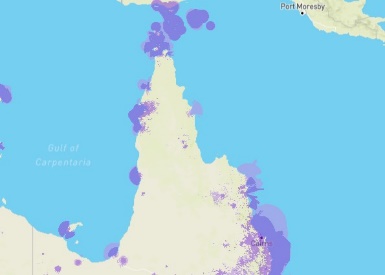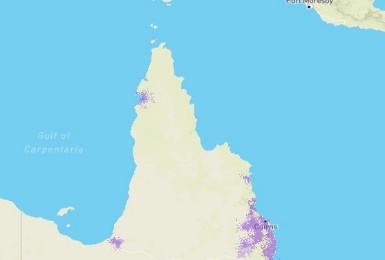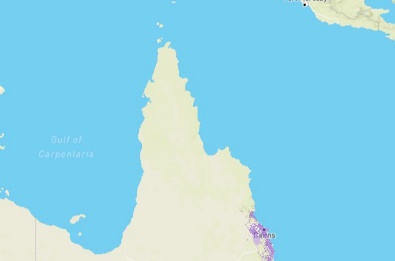Executive Summary
This paper offers a project brief for a community improvement program in the Cape York region, Australia. Since the area suffers from inadequate phone and Internet coverage, the project brief addresses this issue. The given report follows a specific structure to present the logical and reasoned thread of thoughts. Four large sections will introduce the background information on the EWB Challenge and Cape York region, identified issue, essential stakeholders, and determine problem statement. In the project brief, it was determined that the selected community suffers from insufficient phone and Internet services since they are inhabitants of remote territories. The report has produced the following problem statement:
Improving mobile and Internet coverage in the remote territories of the Cape York region.
Background on EWB Challenge
EWB Challenge is of significance since it contributes to a better world for multiple people. Engineers Without Borders (EWB) (2021, p. 5) admit that this organization “takes a community-centered approach to bridge self-identified gaps in access to community health, wellbeing, and opportunity.” Together with the Center for Appropriate Technology (CfAT), the organizations support people in regional and remote Australia, the Cape York region being a focus.
Selected Challenge project
This project brief will focus on the project of Improving the CfAT Hotspot in Design Area 2: ICT (EWB, 2021, p. 16).
Background on the Cape York Region
The Cape York region is a part of Far North Queensland that is home to a significant group of the Indigenous population. According to Gynther et al. (2019, p. 68), this population group consists of “Aboriginal and Torres Strait Islander Australians,” who typically live in and around traditional homes far from urban areas. Gynther et al. (2019, p. 69) claim that remoteness is an essential disadvantage for these individuals. Consequently, one can suppose that the Cape York region suffers from inadequate phone and Internet service, and EWB (2021, p. 14) justifies it. However, the following section will try to identify credible evidence to prove this statement.
Current Internet and Phone Coverage in Australia
Australia is a large nation where the population is scattered across a vast territory, and mobile network operators (MNOs) should do their best to cover it with their service. McLaren (2018, p. 41) mentions that Telstra, Optus, and Vodafone are three MNOs in Australia. De Ridder and Eckermann (2017, p. 4) add that these companies cover most of the country’s territory. Telstra is considered a dominant force in the market since it holds the largest share (Wiwatowska, 2020, para. 3). These literature findings denote that a significant part of the Australian population is provided with mobile and Internet coverage, but room for improvement is still present.
It is necessary to present the organized data to comment on phone and Internet coverage in Australia. Table 1 has been created using the Australian Infrastructure Audit information (2019, p. 569). Thus, the table demonstrates that a minor part of the Australian territory has access to phone and Internet services, but it accounts for almost all the population, which happens because coastal Australia is mainly inhabited.
Table 1: Phone and Internet Coverage in Australia
Since the information above has addressed a nation-wide state of affairs, it is reasonable to analyze how communities in the Cape York region of Far North Queensland are provided with phone and Internet coverage. Wiwatowska (2020) offers Figures 1-3 below to depict how many stations the three Australian MNOs have in the region under analysis. The comparison of these figures proves that Telstra is the largest MNO because it provides the Indigenous population with the best coverage options. Wiwatowska (2020, para. 5) even describes that many rural customers only have access to phone and Internet services because of Telstra. On the contrary, Optus and Vodafone fail to provide the inhabitants of remote territories with decent services, meaning that they only focus on urban areas.



Stakeholders Initial Identification
Phone and Internet services are essential for the whole society, meaning that multiple stakeholders are under the influence. Table 2 will offer information on these stakeholders, their impact, and interest.
Table 2: Stakeholder Identification
Identified Problem Statement
Almost all the Australian population has access to adequate phone and Internet services, but it is not the case for the Cape York region’s inhabitants. It is a remote territory, meaning that the MNOs are not highly interested in providing it with decent coverage. Even though Telstra offers its services to these people, they are not sufficient since these individuals live in vast territories, and additional efforts are needed.
The community needs analysis allows for offering the following problem statement:
Improving mobile and Internet coverage in the remote territories of the Cape York region.
Reference List
Australian Infrastructure Audit (2019) Telecommunications. Web.
De Ridder, J. and Eckermann, R. (2017) ‘SafetyNet: a new approach to rural and remote communications’, Australian Journal of Telecommunications and the Digital Economy, 5(3), pp. 1-14.
Engineers Without Borders Australia (2021) 2021 EWB Challenge design brief.
Gynther, B. et al. (2019) ‘The epidemiology of psychosis in Indigenous populations in Cape York and the Torres Strait’, EClinicalMedicine, 10, pp. 68-77.
McLaren, G. (2018) ‘How Australia’s politics, insular policies, and preference for monopolies have made Australia a broadband backwater’, Australian Journal of Telecommunications and the Digital Economy, 6(4), pp. 31-62.
Wiwatowska, A. (2020) Telstra vs. Optus vs. Vodafone coverage maps Australia. Web.